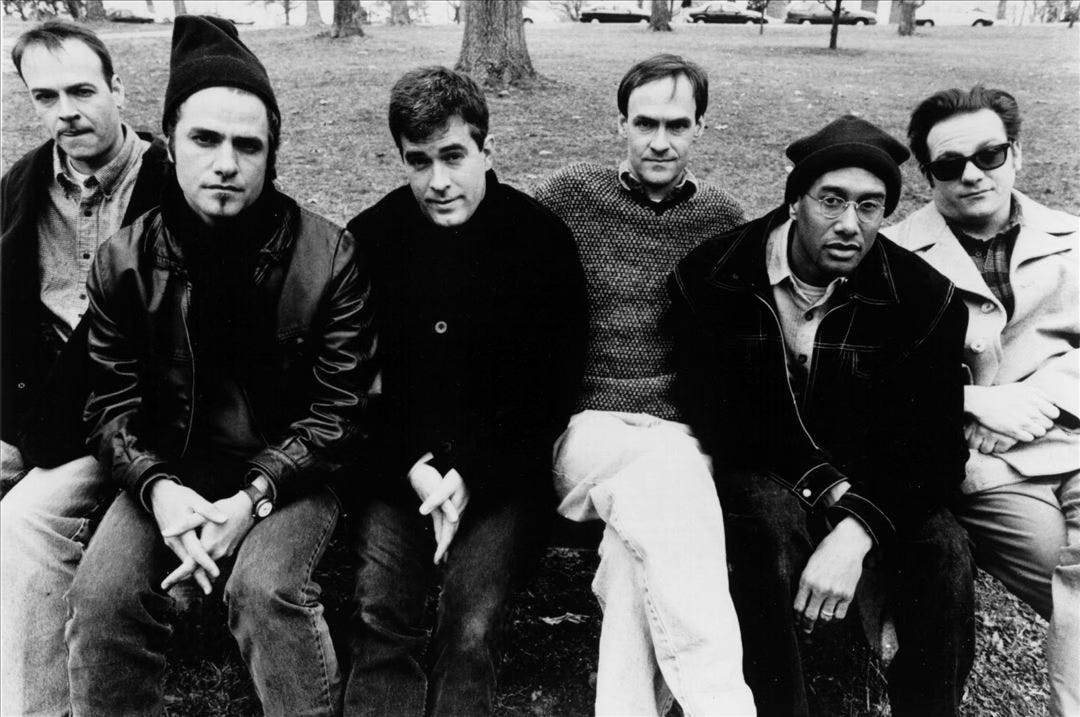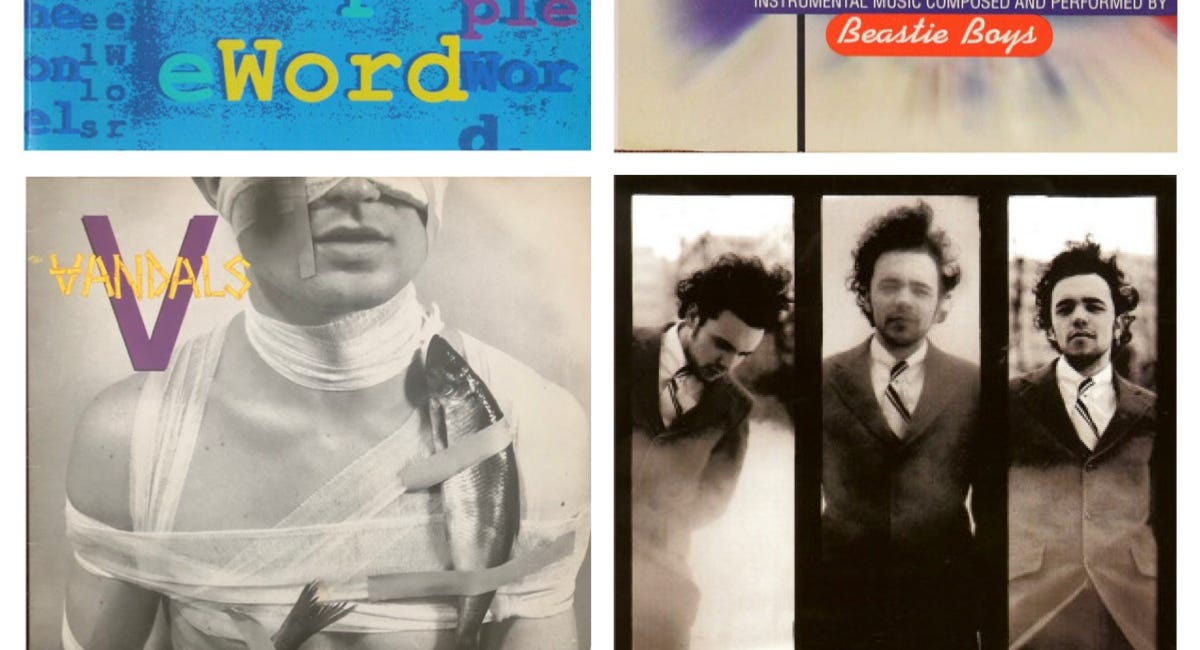The Connells | History of the Band
The Southern band that gave us jangling guitars, Celtic melancholy, and a perfect ballad
Every band starts with a spark. For The Connells, that spark ignited in 1984 in Raleigh, North Carolina. Brothers Mike (guitar) and David Connell (bass) teamed up with vocalist Doug MacMillan, pulling inspiration from the chiming jangle of The Byrds and the wistful indie mood of Echo & the Bunnymen.
The lineup solidified quickly when George Huntley joined on guitar and keys and Peele Wimberley replaced original drummer John Schultz later that year, forming the quintet that would define their sound through the next decade.
Critics often mentioned R.E.M., but The Connells carved their path with 12-string Rickenbackers and clear-eyed lyrics. Their 1985 debut Darker Days, produced by Don Dixon, introduced a moody, melodic take on jangle-pop. Politically charged track “Hats Off” even received MTV late-night rotation.
Keith P Miller suggested this artist for a future Dig Me Out podcastepisode. Each month, our Paid Subscribers are presented with a selection of albums suggested by listeners and asked to vote for their favorite.
1987’s Boylan Heights, produced by Mitch Easter, became their breakthrough. Ringing guitars, melancholic folk flourishes, and introspective lyrics. Songs like “Scotty’s Lament” felt timeless.
By 1989’s Fun & Games, songwriting sharpened and sound toughened. George Huntley emerged as a second songwriter, balancing Mike Connell’s introspection with rock-forward dynamics. The Connells were ready to take on the 1990s with polish and heart.
Musical Style and Evolution
The '90s didn’t shake The Connells. They refined their sound without losing their core. One Simple Word (October 1990), produced by Hugh Jones in Wales, brought polished shimmer to tracks like “Stone Cold Yesterday,” which peaked at #3 on Billboard's Modern Rock Tracks, while “Get a Gun” hit #24.
The early ’90s saw expanded contributions, from Huntley’s power-pop flair to Doug’s rock instincts and Mike’s emotional lyricism. This culminated in Ring (September 1993), an album that balanced upbeat jangle (“Slackjawed,” which reached #9 on Billboard Alternative Songs) with poignant balladry, most notably “‘74–’75,” a cello-laced gem that became a European hit in 1995. It topped charts in Norway and Sweden and reached the top 10 across eleven countries.
Mid-decade, the band explored darker territory with Weird Food & Devastation (1996), embracing distorted guitars and heavier moods. Critics were split, but fans respected their risks.
By 1998's Still Life, they found balance again. With Jim Scott at the helm (known for work with Tom Petty and Wilco), the album blended warm harmonies, alt-country touches, and full-band songwriting. Every member contributed, resulting in a cohesive, mature sound.
Discography and Notable ’90s Albums
One Simple Word (1990)
Fourth studio album, produced by Hugh Jones. Peaked at #168 on the Billboard 200. Features radio-friendly hits “Stone Cold Yesterday” and “Get a Gun,” and a broad emotional range with tracks like “Waiting My Turn.”
Ring (1993)
Fifth album, featuring the breakthrough single “‘74–’75,” recorded March 1993. Though the U.S. Billboard 200 peak was modest (#199), the album struck platinum in parts of Europe thanks to that single. “Slackjawed” also charted in the top 10 U.S. Alternative Songs.
New Boy EP (1994)
A short, fan-friendly bridge between albums. Standouts include a playful cover of Jethro Tull's “Living in the Past.”
Weird Food & Devastation (1996)
A sonic detour. Produced by the band and Tim Harper, with some mixing help from Scott Litt, this album ventured into post-grunge darkness. “Maybe” retained their signature style, but tracks like “Adjective Song” and “Fifth Fret” challenged listeners. Not their easiest record, but maybe their boldest.
Still Life (1998)
A return to warmth and clarity. With Jim Scott (Tom Petty, Wilco) producing, the band found fresh energy. Every member brought songs, making this their most democratic and arguably most cohesive album yet. Critics hailed it as a return to top form.
Critics always respected The Connells, though they didn’t always fit easily into trends. One Simple Word received praise for its refined sound. While Ring got modest U.S. reviews, it exploded in Europe thanks to “‘74–’75.” Weird Food divided opinion, yet found defenders. Still Life was widely celebrated as a comeback, with The Washington Post calling it “one of the best examples of Southeastern alterna-pop.”
Influence and Legacy
In Raleigh and beyond, The Connells became Southern indie rock ambassadors. They influenced future acts such as Ryan Adams and echoed in the sounds of Gin Blossoms and Toad the Wet Sprocket.
Their heartfelt lyrics, chiming guitars, and steadfast sincerity helped define the genre. And that “‘74–’75” video? Still one of the most emotionally resonant music videos of the ‘90s.
Despite limited U.S. stardom, they weathered the decades. Their 2021 album Steadman’s Wake proves their story continues.
The Connells weren’t the loudest band of the ‘90s, but they may have been the most authentic. Their songs were timeless.
Revisit One Simple Word, dive into Ring, embrace Weird Food, and savor Still Life. In every chiming chord and wistful lyric, The Connells remind us there is power in persistence, beauty in clarity, and real magic in a jangling guitar that still rings true.
90s Rock Tournament | Vote
Each month, listeners nominate the under-the-radar 90s rock albums that still echo in their heads. Records that meant something then and deserve another listen. This round features four listener picks, each with its own story, sound, and slice of the ‘90s.





Thank you for this. Connells have been my favorite band since 1989.
I grew up in Raleigh. Always thought these guys could’ve been huge with slightly different timing. I’m always a little surprised when i encounter someone who has heard of them, but maybe I shouldn’t be?? I heard a cover of “‘74 - ‘75” at my gym a few months ago and was happily blown away.